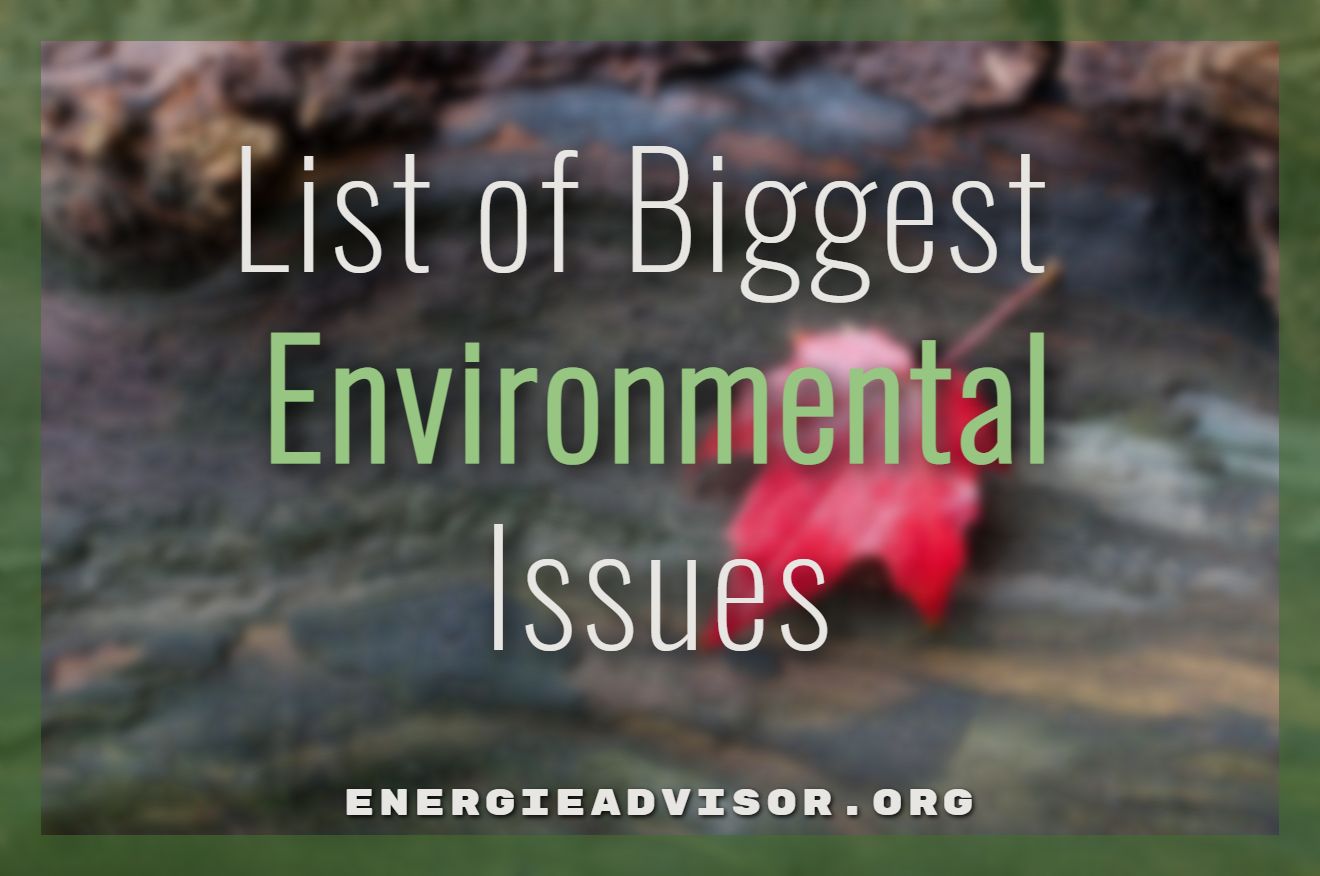We have a lot to worry about. Our planet, the only one we have, is more fragile than ever and exposed to a lot of threats. Even though we are fighting to admit it, we are the ones who are responsible for that, collectively. It’s on us the fact that the air, water, and soil are polluted to an alarming level, or that we do nothing, or at least too little about climate change.
It’s on us the fact deforestation is even a thing that has its name, or that nuclear issues even exist. So let’s take a second to acknowledge that and accept the responsibility. If you wonder what are the top 25 biggest environmental problems, besides these previously mentioned ones, here is the list.
Current Environmental Problems
1. Air Pollution
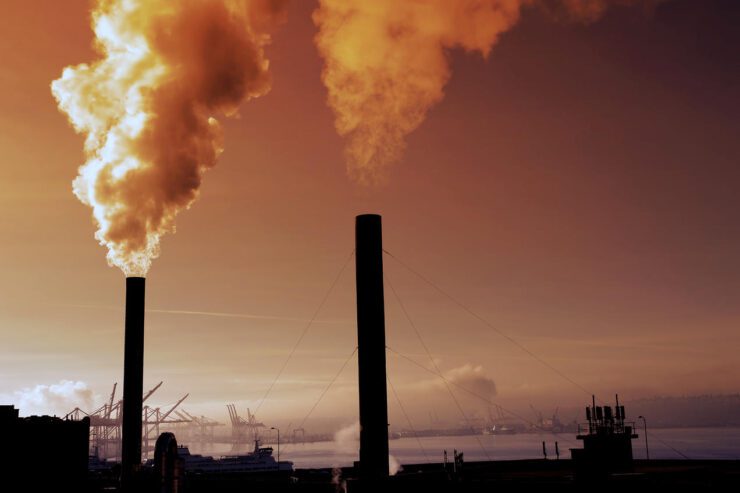
One of the biggest global environmental issues is air pollution. The air we breathe is very much contaminated by gasses and poisons released by industrial and manufacturing plants. The air becomes polluted when a huge amount of harmful substances are released into Earth’s atmosphere.
One of the most contagious toxins is industry and engine vehicle fumes.
2. Water Pollution
When it comes to water and soil pollution, it can happen so easily and so fast, but it will take years for them to recover completely. It’s very much alarming the fact that clean drinking water is becoming a rare thing in some parts of the world, and politicians shamefully turned that into a monetary.
The most common water polluters are industrial and agricultural waste, acid rain, and urban sprawl.
3. Land Pollution
The contamination of our soil is mostly caused by mechanical waste, and it leads to the degradation of the Earth’s surface. Human activities, like mining, agricultural, industrial, and construction work, as well as deforestation, are the ones that are responsible.
The thing that’s concerning is that soil pollution affects the quality of air and water too, which negatively affects human health. It’s a vicious circle that’s difficult to stop.
4. Global Warming
The term global warming refers to the rise of the Earth’s climate system’s average temperature, caused by humans. Thanks to the burning of fossil fuels, greenhouse gasses are being released into the atmosphere.
They trap the sun’s warmth and raise the air and soil temperature, which is causing a huge environmental change that brings out many unexpected consequences like melting ice, ocean disruption, and extreme weather.
5. Climate Change
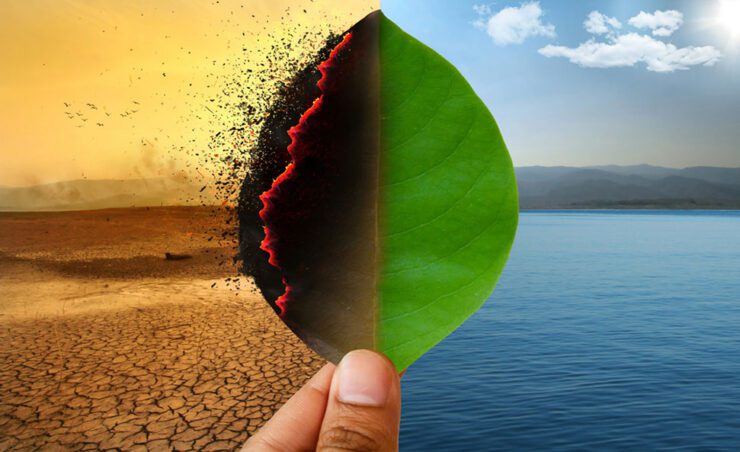
Global warming has a significant impact on global climate change. These two phenomena are linked. Irresponsible human behavior leads to raising the temperature of Earth’s climate system, and that causes considerable shifts in weather output.
Because of that, we have floods and droughts, devastating storms, tornados, and other natural disasters in many places on Earth.
6. Increased Carbon Footprint
Based on temperature increment, there are a lot of greenhouse gasses present in the atmosphere. That’s something that can potentially cause many problems.
A carbon footprint is basically a total greenhouse gas emission expressed as carbon dioxide equivalent.
7. Deforestation
It is well known that forests are the ones that create new oxygen we all depend on.
So it’s devastating to hear that areas that are covered by trees are taking only 30 percent of the Earth’s surface and that they are diminishing more and more because people are cutting them for different reasons, without even thinking about the consequences of their actions.
8. Genetic Modification
Genetic modification procedures allow people to change the basic and natural characteristics of micro-organisms, plans, and animals, by crossbreeding pieces of different DNA. It is a genetic manipulation performed by scientists in an attempt to win over nature.
There is a huge moral dilemma regarding this topic, but it’s certain that these experiments brought us some serious problems and challenges.
9. Effect on Marine Life
There is a disproportionately large amount of carbon in the atmosphere and water all around the world, which is a big problem since it affects the living world under the water surface.
The most vulnerable are microscopic fish and shellfish.
10. Overpopulation

Current environmental issues include overpopulation. It is a bit harsh to say this, but experts say that our planet is overcrowded and that overpopulation is a potentially big problem since it reached unsustainable levels.
There are not enough assets like water and food to satisfy the basic needs of every human being.
11. Public Health
A great number of people that are living in third world countries are in danger because they don’t have access to clean drinking water.
Because of that, their health and well-being is compromised and in great danger.
12. Loss of Biodiversity
Since there is a problem with overpopulation, people started inhabiting so far unoccupied areas, which means they started destroying forests and polluting what used to be clean natural surfaces.
As a result, there is a huge loss of biodiversity. Many animal and plant species are extinguished by now, which can have a great effect on our future, negatively.
13. Household and Industrial Waste
We are living in a time where we don’t think enough about the consequences of our behavior, so there is an overutilization of many assets, like plastic, for example.
The fact that plastic needs thousands of years to decompose is alarming because it ends up in our soil and water constantly.
14. Ozone Layer Depletion
The ozone layer that’s surrounding our planet is protecting us from harmful sunbeams.
But there are some depletions of this layer because of the contamination caused by Chlorine and Bromide that can be found in Chlorofluorocarbons. When they reach the atmosphere, they are creating holes in the ozone layer.
15. Natural Resource Depletion

There are some natural resources that are non-renewable, but we are persistent in using them. That will, most certainly, lead to the point where they will be expired, which will then have some serious repercussions.
The excessive consumption of fossil fuels can increase the global temperature, which will then provoke ice caps to melt and a massive increase in sea levels.
16. Mining
The continuous extraction of minerals that can be found in Earth’s core is achieved by mining.
We do need some of them in order to live the life we are used to, but the thing is, when we bring them up from the soil, they can come with some harmful chemicals that can pollute the water and air we breathe.
17. Natural Disasters
The power of nature is unquestionable.
The unpredictable earthquakes, volcanic eruptions, floods, cyclones, tsunamis, etc. can be the cause of the death of many people and the destruction of people’s property.
18. Nuclear Issues
Nuclear plants contain radioactive waste in the form of nuclear fuel, that’s actually a by-product of nuclear power generation.
The way this waste is being dismissed is the main concern because it represents a huge endanger to our environment. It’s toxic and has an extremely catastrophic effect on the life of people who live in that area.
19. Loss of Endangered Species
The fact that our planet is overpopulated is no joke. People are searching for new regions and spots they can create a life on, and because of that, many animal and plant species are being distinguished.
Environmental frameworks are changing since many endangered species are lost until now.
20. Acid Rain
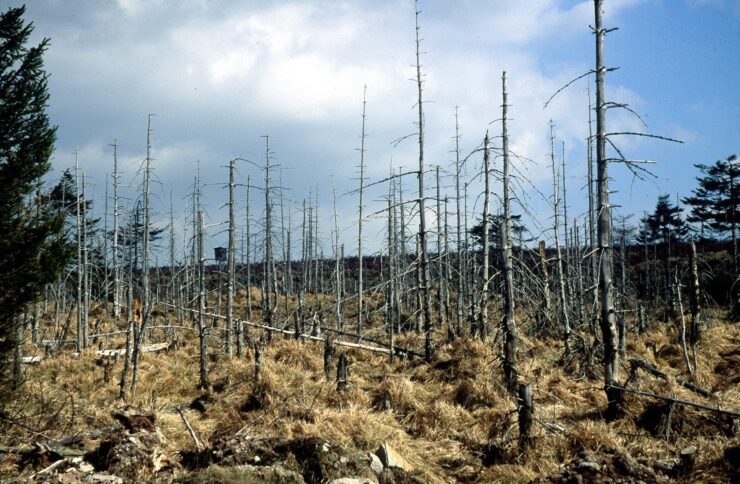
Acid rain can happen if some kind of poisonous substance is present in the climate. It is, in a way, regular rain, but it is extremely acidic because it has elevated levels of hydrogen ions.
It can be very harmful, and it’s usually brought up by volcanoes, the usage of fossil fuels, or spoiling vegetation that emits sulfur dioxide.
21. Noise Pollution
This may sound silly, but noise and light pollution is actually a thing. The sound of construction, heavy traffic, or industrialization can greatly affect our lives.
We are talking about an extreme amount of unpleasant noise that will create a huge impact on human and animal activity.
22. Agricultural Pollution
It is well known that chemical products like pesticides and fertilizers are being used in agriculture, in order to protect planted fruits and vegetables.
Some of them evaporate, but many will stay on the yields and harm them, the crops, and eventually us.
23. Urban Sprawl
When we are talking about urban sprawl, we are referring to people relocating from cities to provincial areas with low density.
That leads to the spreading of the urban centers in a rustic and unpopulated areas, which brings on the environmental concerns.
24. Medical Waste
There is a huge need for hospitals and other health centers, but there is a problem with how medical waste is being disposed of.
That’s everything that’s used in large quantities in these facilities, like gloves, needles, syringes, blades, tubes, etc., but also body parts and blood. All that can contaminate our environment significantly.
25. Littering and Landfills
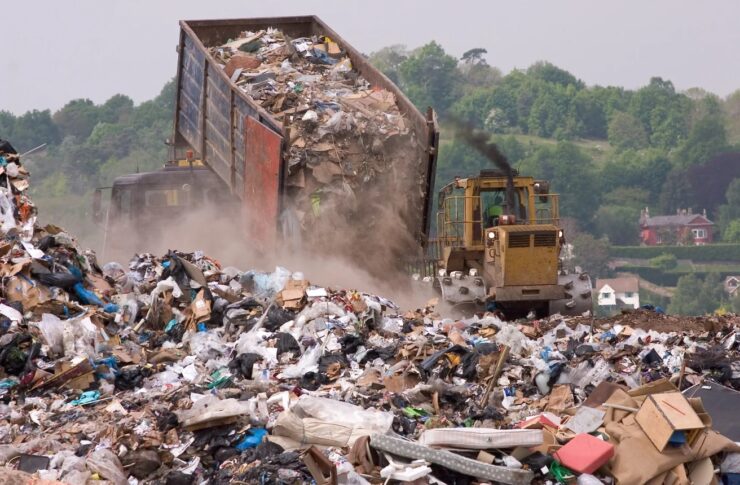
Among environmental issues today are definitely littering and landfills. Littering refers to disposing of the garbage in the wrong location or on the ground, which can lead to a big environmental and economic problem because there needs to be an investment in cleaning up the polluted areas.
Landfills are another problem since they can produce dangerous gases that could be fatal for animals and humans.
Solutions to Environmental Issues
Now, we need to accept reality, but not to cry over it. It’s on us to do everything we can in order to make some changes regarding these issues and to improve the conditions we live in.
There are several ways we can contribute to our planet’s well-being, and there’s no reason to wait for their implementation.
1. Affordable and Clean Energy
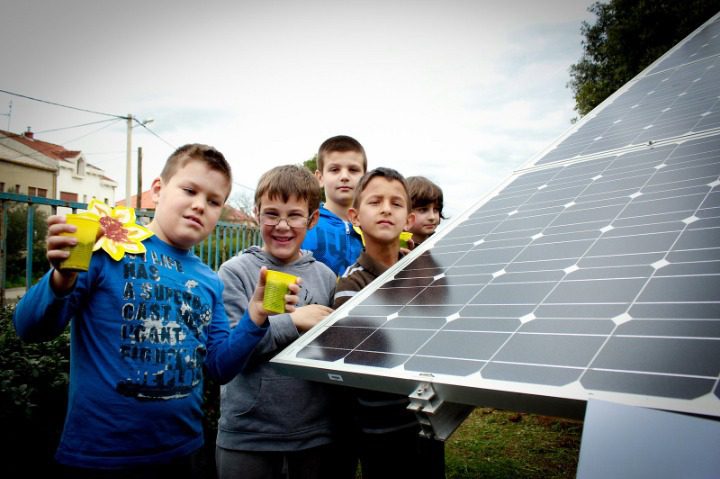
The first thing we all can do is to turn to clean and affordable energy. We are talking about solar, wind, and thermal energy sources that are renewable, eco-friendly, and cost-effective.
According to experts in this field, renewable energy is the number one tool that can help us fight against climate change since these technologies can displace emissions from fossil fuels. Adopting these technologies also means reducing global electricity consumption by a great amount.
2. Sustainable Homes
It is a well-known fact that traditional households contribute to CO2 emissions and the greenhouse effect, just like global warming, and that it is essential to shift to sustainable homes in order to regain natural sources balance and protect our health.
These houses are environmentally healthy, energy-efficient, and as comfortable, and regular, and they are based on alternative energy resources.
We are talking about the usage of solar panels for homes, wind turbines as their main systems, geothermal heat pumps, rainwater collector systems, gray water systems, etc.
3. Conserving the Natural Resources
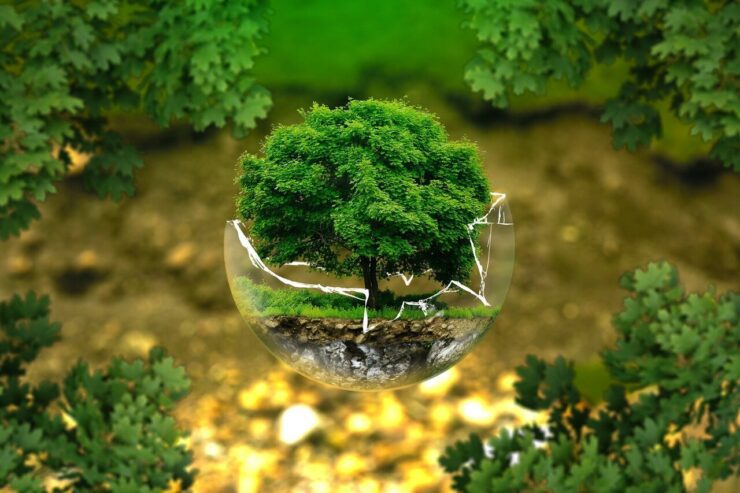
You wouldn’t believe how conservation of natural sources can help with this matter. That’s the process of rational usage and preservation of our environment and everything it has to give. Many natural resources are non-renewable, and their extensive usage is disturbing the natural balance, which leads to some serious consequences regarding our life on the planet.
Some ways in which we can contribute when it comes to conserving natural sources are recycling, protecting our forests, driving fewer cars, buying fewer things or at least purchasing products made of recycled materials, conserving energy at home, etc.
4. Improved Food Production

Food production is one of the biggest factors of climate change. Since it is creating huge environmental damage in the form of polluting the environment due to an over-usage of nitrogen and phosphorus fertilizers, it is crucial to improve these processes and make sure they are less affecting our planet.
The recommendation is to change the global diets towards planet-based nutrition with less animal-based food, highly processed foods, refined grains, added sugars, etc. The other solution is to reduce food waste, to apply new technologies of agriculture, adopt water conservation, and improve the irrigation systems.
5. Carbon Capture and Sequestration
The process of carbon capture and sequestration includes capturing the carbon dioxide at the emission sources, storing it, usually deep underground, and isolating it. That can help us fight global warming and create greener energy.
Thanks to the power plants and excessive usage of vehicles that burn fossil fuels, the amount of CO2 in the air is larger than it should be, and that leads to raising the temperature of the planet. That’s why carbon capture, mainly directly from the power plants, is important if we tend to prolong the life of the planet we are living on.
Conclusion
When we see the statistics and hear about how our lifestyle badly affects our planet, we tend to become very worried and concerned, but the fact is, very few of us make an effort in order to change the current situation.
The experts from all around the world are constantly bombing us with devastating information with the intent to make us wake up and start acting on these matters because the clock is ticking, but it seems like we are extremely passive and unveiling to make some changes. That has to end.
We have to take our lives into our own hands and show that we are ready to help our planet survive our own negligence. And the truth is, we can do that, together, by adopting small changes and living according to them, day by day.

